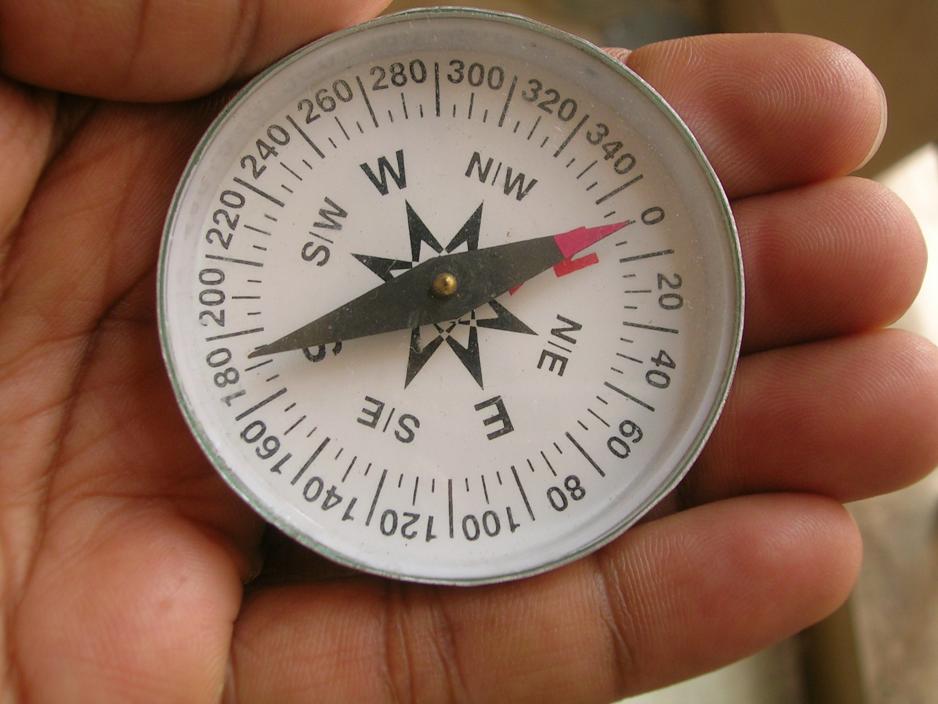With a compass in my pocket

Aristotle, the philosopher we often refer to as one of the wisest of us all, had the opinion that The Good Life laid safely placed between “The torrid south and the frigid north”. The Greeks and the Romans believed that no civilization could be built outside the temperate zone. Poor Captain Hatteras in Jules Verne’s book “Voyages et aventures du Captitaine Hatteras” from 1866 grew insane after his trip to the north. His doctor diagnosed him with “The Polar Illness”. The reason: He came too close to the magnetic North Pole. The symptoms: “Captain John Hatteras was always walking towards the north”.
“The Polar Illness” isn’t the kind that hurts you; it’s the one that gives you drive and meaning. It infects through knowledge and enthusiasm, and it’s as harmless as disco fever.
To walk towards the north is rarely a bad idea, not in national or foreign politics – nor in life generally. My own early symptoms appeared when I was offered an exciting job in the north after a period of time in the Norwegian temperate zone (Oslo). The desire to continue to live here has increased greatly due to the myriad of exciting career opportunities, in addition to the fact that my definition of The Good Life, is the life I have here.
Our international, competitive advantage
The public Norwegian debate speaks every day, in one form or another, of a “robust, innovative future with knowledge based industries filled with knowledge-based industries which creates values with international potential – that can shift our economy”.
Too seldom is this connected with concrete examples. Our largest international competitive advantage is our oceans, the coast and the knowledge connected to safety, business and resource management. We’ve also developed good, foreign co-operation with our Arctic neighbours through, for instance, the Barents co-operation and the Arctic Council. When we, as an Arctic nation, are to compete globally in both traditional and new markets, we need to look to our advantages.
Let’s bring out our compasses when we look for new directions, that pin always points to the north, where 80 per cent of our oceans lie, where 10 per cent of the Norwegian inhabitants live, and where the connection between people and resources can create “robust, innovative, knowledge-based and valuable businesses with international potential”.
The possibilities of blue innovations
We have a world-class energy sector, in which people have developed technology that we export to other countries, and which continues to develop. We have a strong supply industry on land and a strong shipping sector. We have petroleum resources. We have wind, waves, algae and currents – all in connection to our oceans. We are world leaders in energy today, and nothing contradicts us being just that in other energy sectors as well.
The seafood industry, with livestock and fisheries in front, is booming. Only imagination sets limits in terms of what the global market wants to eat or pulverize in their protein shakes. You name it – the ocean has it on the menu. The Arctic ecosystems have been shown to contain raw ingredients for the pharmacists to develop medicines. The ocean supplies not only food, it’s an apothecary as well – and these are all areas where business is flourishing already.
Our settlement pattern
In addition to this, we’ve proven Aristotle, the Romans and the Greeks horribly wrong. We’ve created The Good Life north of the Polar Circle, building sustainable societies and business hubs both on the mainland and on Svalbard. In Longyearbyen we find a knowledge-intensive, industrial and adaptable society that has shown very important for our position in the Arctic.
Our settlement politics is expensive, yes, but it’s also referred to as a story of success. Jyllands-Posten defined it this way only a few weeks ago, and the economic growth in Northern Norway was the best example to show for it (3 per cent higher than the rest of the country in 2013). People have to live where you want to do business – and we should do business where we have global advantages. Human resources are the most important when we speak of a sustainable Arctic region.
A responsibility to convey the message
10 per cent of Norwegian inhabitants live above the polar circle. That is the highest proportion of the 8 Arctic nations. Innovations connected to the ocean and the coast will not be realized if we can´t see the potential.
If we really want to build and develop sustainable business communities and spread knowledge about Arctic issues, we have to convey the message to our youth at an early stage; they are the ones who will create and shape our future. When they finish school and go on to choose their educations, they should have a clear image about what the business community around them looks like, and which issues we need to address. The interest for science and technology needs to be stimulated. Such knowledge is the key to making a difference, by using environmental-friendly technology, and learning more about ocean resources.
The business community can be both a leading example and a role model. Connecting business and schools has also been shown to motivate pupils and lower the dropout numbers – a number which should keep us awake at night over the whole country.
We have students who want to make a difference in society, within their respective areas. Both educational institutions and the business community need to lay the foundation for eager students to work with pressing issues. It’s hard to automatically see this if you have no contact with the businesses around you. In Northern Norway we have over 23.000 students. I get the chills (the good kind) from imagining the latent ideas and solutions, which lie in this connection.
The capacity is there – the link between them is poor. Involvement is key.
In the Arctic perspective
My Polar Illness has started in an interest about how we are building the Norwegian north; it has advanced, to how we are participating in developing the Arctic as a region.
In a few days time, I’m travelling to Ottawa with two other young Polar patients to be a part of “The Future Arctic Leaders workshop” organized by the Arctic Council. Together with representatives from the other nations, we are discussing how to strengthen human development in the Arctic, and how the Arctic Council can play a role in this.
It’s important to put a stronger focus on just this, the human element; the knowledge we contain, the potential this area represents and how we manage these possibilities. This must be better conveyed to the people of the Arctic, and to the rest of the world. I hope we can create a young, vibrant, Arctic team which can build strong societies and business communities where we have our homes, but also to co-operate on common issues across boundaries. If we decide to work together, we increase the possibility of creating the Arctic we aspire to – a sustainable, innovative and viable region.
I look forward to taking the compass from my pocket in Ottawa, and seeing the magnetic pin still pointing north – from a new and exciting angle.
.
On Friday the 25th of April the USA will assume Chairmanship of the Arctic Council. In the days prior to the meeting, future leaders of the High North are attending a workshop in Ottawa to discuss the future of the North. High North News will be present in Ottawa, but ahead of the workshop the norwegian delegates will present their thoughts and opinions by blogging for High North News. Todays post is written by Siri Beate Arntzen, from Sørvågen in Lofoten. She works for the Norwegian Oil Industry Association, and is a student at UiT The Arctic University of Norway.
Read more from Future Arctic Leaders:
In cod we trust
Can the Arctic be sheltered?

